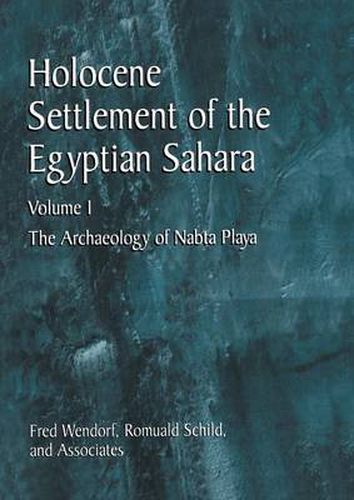Readings Newsletter
Become a Readings Member to make your shopping experience even easier.
Sign in or sign up for free!
You’re not far away from qualifying for FREE standard shipping within Australia
You’ve qualified for FREE standard shipping within Australia
The cart is loading…






This title is printed to order. This book may have been self-published. If so, we cannot guarantee the quality of the content. In the main most books will have gone through the editing process however some may not. We therefore suggest that you be aware of this before ordering this book. If in doubt check either the author or publisher’s details as we are unable to accept any returns unless they are faulty. Please contact us if you have any questions.
by Fred Wendorf and Romuald Schild The Eastern Sahara is a fascinating place to study structures. These larger, more complex sites are almost prehistory. Confronted with the stark reality of a hyper always in the lower parts of large basins, most of which arid environment that receives no measurable rainfall, were formed by deflation during the Late Pleistocene lacks vegetation, and is seemingly without life, it would hyper-arid interval between about 65,000 and 13,000 seem to be an unlikely place to find a rich and complex years ago. Their location near the floor of these basins mosaic of archaeological remains documenting past was influenced primarily by one factor - water. During human presence. Despite this impression of a hostile wet phases, runoff from extensive catchment areas environment, there is widespread and abundant caused the development of large, deep, seasonal lakes, archaeological evidence. or playas, in the lowermost parts of these basins. This It is obvious that this area was not always a lifeless surface water would last for several weeks or months desert. Faunal and plant remains found in the excavations after the seasonal rains, and by digging wells after the at Holocene-age settlements, dating between 9500 and playa became dry, water could still be obtained during 5000 radiocarbon years ago, indicate that rainfall during most, if not all, of the dry season.
$9.00 standard shipping within Australia
FREE standard shipping within Australia for orders over $100.00
Express & International shipping calculated at checkout
This title is printed to order. This book may have been self-published. If so, we cannot guarantee the quality of the content. In the main most books will have gone through the editing process however some may not. We therefore suggest that you be aware of this before ordering this book. If in doubt check either the author or publisher’s details as we are unable to accept any returns unless they are faulty. Please contact us if you have any questions.
by Fred Wendorf and Romuald Schild The Eastern Sahara is a fascinating place to study structures. These larger, more complex sites are almost prehistory. Confronted with the stark reality of a hyper always in the lower parts of large basins, most of which arid environment that receives no measurable rainfall, were formed by deflation during the Late Pleistocene lacks vegetation, and is seemingly without life, it would hyper-arid interval between about 65,000 and 13,000 seem to be an unlikely place to find a rich and complex years ago. Their location near the floor of these basins mosaic of archaeological remains documenting past was influenced primarily by one factor - water. During human presence. Despite this impression of a hostile wet phases, runoff from extensive catchment areas environment, there is widespread and abundant caused the development of large, deep, seasonal lakes, archaeological evidence. or playas, in the lowermost parts of these basins. This It is obvious that this area was not always a lifeless surface water would last for several weeks or months desert. Faunal and plant remains found in the excavations after the seasonal rains, and by digging wells after the at Holocene-age settlements, dating between 9500 and playa became dry, water could still be obtained during 5000 radiocarbon years ago, indicate that rainfall during most, if not all, of the dry season.